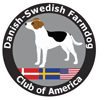Dog Food by Hand
By Carol Lemmon
Many DSFCA members and/or their dog-loving friends are either cooking their own food for their dogs or composing a diet of fresh raw foods. Most of us grew up being told that only the pet food companies know how to properly feed our non-human family members. Deviation from commercial kibble was considered to be capricious, uncaring and dangerous behavior. Dog owners felt guilty about even consistently feeding canned dog food. Vets were taught the same thing and diligently backed up this message that really came as marketing from pet food producers. This is beginning to change. Large numbers of dog and cat owners have come to distrust commercial pet foods for good cause, for example, the revelation several years ago that melamine had become an ingredient in most of the major pet food brands and was killing animals.
The image of caring pet food manufacturers really knowing what is best or caring about their ingredients is crumbling. The link between dog and cat foods providing a poorly regulated waste management system for food processors is becoming better known. Dog and cat owners in large numbers are beginning to understand that it is possible to compose a healthy diet for their animals on their own and that their pet stands a chance of being healthier in the long run. It is not hard to find someone with a personal testimonial about changing the health of a formerly sickly dog by not feeding kibble anymore but feeding fresh.
Is there a recipe? There are many. The best how-to guides, however, should emphasize variety. Dogs need animal protein, fruit and vegetables and carbohydrates. Carbohydrates should not mainly be white and starchy-fruits and vegetables also provide carbohydrates in addition to more vitamins and minerals. No different than with yourself, in order to get balanced nutrition and all of the micronutrients, change the animal protein source, change the fruits and vegetables, also change the other carbohydrates sources on a regular basis. One writer on the subject stated that it wouldn't be considered healthy to only feed a human child Total cereal, therefore why would it be healthy to feed the same formula ingredients to a dog for their whole life.
Don't feed too much fat, but feed some. It can be from animal fat and vegetable oils. Don't be afraid to feed too much protein, some of which should come from organs and not muscle. Don't overfeed grains — in fact many dogs will do better grain-free. Grains in commercial dog food, and in homemade diets, are the cheaper filler to provide calories. Dogs don't need grains, but most can tolerate some. Some dogs cannot tolerate much, and overfeeding grains may worsen symptoms of irritable bowel syndrome. Grains must be cooked to be digestible to the dog.
Remember that dogs need lots of calcium. In kibbles, of course, it is already put in. If you cook or feed raw, however, the owner needs to consider adding human grade bone meal, grinding up bones to add to the diet or regularly feeding their dogs meaty raw bones. This includes chicken parts. Uncooked poultry bones are safe for dogs. It is the cooked bones that are brittle and can splinter causing organ damage. Some dogs can tolerate quantities of cow's milk products, but many cannot, therefore it is best to not plan on providing calcium for your dog through cottage cheese, yogurt or cheese (which is too fatty for the amount of calcium it imparts).
Proportions of protein foods to produce can be as high as 70%: 30%. Protein should not be less than 30%. In general, produce is best passed through a food processor. Dogs will often not eat hunks of vegetables or fruit, but will readily eat a puree mixed with meat. Pureed fruits and veggies can definitely be raw, but may be lightly cooked.
For the dog owner taking on providing their own food for their dogs, how-to guides may contain a caveat is that the diet should be backed up by a good multivitamin for the animal. This is somewhat of a "cover your backside" statement meant to fill in gaps in the great unknown of dog nutrition for the dog cook. This suggestion's origin is not much different from a doctor telling a human the same thing, usually in a futile attempt to provide balance to the routinely poor food choices made by their patient. As with ourselves, if our diet consists primarily of a variety of minimally processed, whole foods, we should not need to supplement with a vitamin. The long list of vitamin and mineral supplements on the back of a bag of kibble is to replace the nutritional value lost from the base ingredients by the high heat processing of the product. The ideal vitamin/mineral components and levels for dogs are not universally recognized among veterinary nutrition scientists.
Each meal for your dog does not need to be completely balanced between animal proteins, fruits and vegetables, other carbohydrates and calcium, but there should be balance over time. Home cooked or raw diets meals are usually quickly snapped up by dogs with little left uneaten. Remember that leftover food should be removed from the floor in less than a half hour to prevent non-pet pests from having a free meal and as natural portion/weight control. Supplementing commercial kibble or canned with a home cooked or raw mix is a start and not a crime. Reading beyond this summary is recommended to thoroughly understand how to do a homemade diet for your dog.
8/14/09
REFERENCES:
Cold River Veterinary Center. "Home food for cats and dogs". www.crvetcenter.com/homefood.htm.
Nestle, Marion. Pet Food Politics: The Chihuahua in the Coal Mine. University of California Press, LTD. London, 2008.
Straus, Mary. "Have Dinner In", The Whole Dog Journal, April
2007.
http://www.whole-dog-journal.com/issues.
(Series April 2007-Sept 2007)
"What's Really in Pet Food". www.bornfreeusa.org/facts.php?p=359&more=1
 >
>